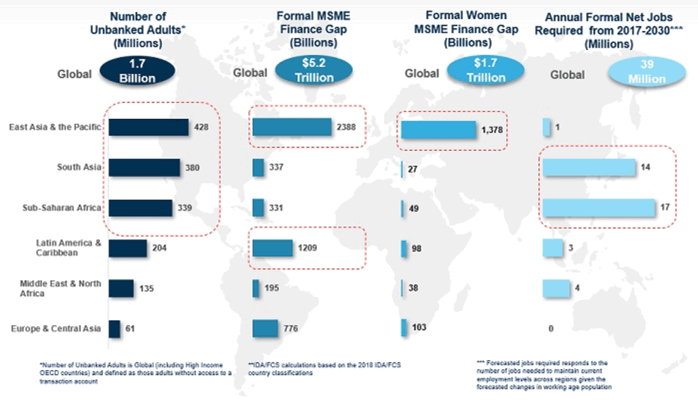
by Daniel Pullen
What is robotic process automation? Broadly speaking, RPA is a useful tool for maximally efficient use of a company’s resources, where ‘tool’ refers to both software and services. As the word ‘tool’ might suggest, functionality is the core feature of RPA, in the sense that it is a technology that enables optimal resource allocation for achieving best possible business results.
For more information regarding the ins and outs of RPA, you can check out our infographic about robotic process automation. At CiGen, we believe that all companies, irrespective of size or domain of activity, may benefit from RPA deployment. Indeed, even small and medium businesses should consider automation through RPA.
How So?
Typically, software companies target RPA implementation in large enterprises, with tens of thousands of employees. But RPA is slowly becoming a viable option for SMBs as well, because it allows for better customer service record for only a fraction of the cost of manual work, and implementation costs have dropped.
Robotic process automation might be just the awaited strategic step that companies with less than 250 employees can make in order to bootstrap themselves out of the $5.2 trillion finance gap and eventually rival large companies. According to Oracle, 76% of SMBs either agree or strongly agree that digital technologies are reshaping their business practices for the good. Last but not least, you should keep in mind that a lower number of employees means reduced internal resistance to RPA – an issue that large companies usually struggle with.

Source: International Finance Corporation
*MSMEs are micro, small and medium enterprises
Is Robotic Process Automation A Viable Option for SMBs?
SMBs are rather reluctant to invest in digital technologies, and typically disregard the fact that RPA can actually be the first step of going digital. There are two main reasons for this. First, SMB executives are prone to overestimating the required intellectual resources for the implementation of RPA, and hence believe that automation is incompatible with the intrinsic limitations of SMBs (e.g., financial and human resources allocation, operational challenges).
But this is not the case. The complexities of RPA concern only developers, while users need no programming knowledge. They only need to drag-and-drop applications and tasks in order to connect them.
The second reason is that some SMB CEOs might not acknowledge the reality of the competitive advantage that can be attained via RPA. But deployment of RPA for small and medium businesses can replace hiring consultants for, e.g., providing additional reports, charts, and presentations. In a nutshell, software robots can help you attain your objectives such as increased profitability or operational costs reduction, with a fraction of the cost.
Benefits of Robotic Process Automation for SMBs
The list below is far from exhaustive. It is merely the tip of the iceberg when it comes to the gains that small businesses can expect from using RPA.
- Low Implementation Costs.
When it comes to the price of RPA implementation, the small number of employees becomes an advantage that shouldn’t be disregarded. As opposed to large companies, it is more likely that individual employees have full, end-to-end knowledge of business processes. This facilitates workflow automation, which can be done in a clear-cut manner and at a significantly lower cost.
- Streamlined Business Activities.
Software robots effectively track and report a lot of data about the tasks that they perform 24/7*365. This data can be leveraged for workflow improvements, which increase your company’s overall efficiency and productivity.
- Increased Flexibility.
Nowadays market demands evolve dynamically and quite unpredictably. This is why the capacity to adapt to new contexts or new goals is crucial for successful SMBs. Scalability is one of the specific features of a robotic workforce, meaning that it can easily adjust to task and time-specific needs. Therefore, by deploying RPA, small and medium businesses can better meet the fine-grained peculiarities of specific business targets.
- Enriched Customer Service.
Bots’ capacity to generate reports automatically can be leveraged to improve the understanding of clients’ expectations and needs. Furthermore, passing on tedious, routine tasks (such as payroll or invoice filling) to software robots, allows your employees to better attend to, and address the very wide spectrum of customer needs.
Also, given the quasi error-free processing warranted by RPA, employees are relieved from the burden of checking, re-checking, re-re-checking, etc. All in all, RPA enables small and medium businesses to sustain a customer-centric approach to business.
- Support growth and expansion.
Use of bots for low-level, high-volume tasks allows to invest time and the bulk of cognitive resources in strategic thinking and long-term planning. This fits like a glove small companies’ commitment to expansion and improvement of services quality.
Steps Towards RPA Implementation for Small and Medium Businesses
- Start With Realistic Expectations.
Acknowledge the fact that RPA is not an instant fix, but involves continuous work in the long run. Ensure that your employees are fully aware of the purposes of automation, and of what it can and what it can’t do. (Raising employees knowledge is easier for SMBs, with a centralised workforce of less than 250 employees.) By doing this, you facilitate the propensity to take action and to actually start using the bots.
- Have A Clear Means – Goals Hierarchy.
In order to mitigate the risk of failure which ranges between 30% and 50%, you should start with a clear, goal-directed, perspective of what you need RPA for. When you run a small or medium business, it’s crucial that you evaluate your needs realistically, while setting this evaluation against the capacities of software robots. By doing this, you will also be better able to select a vendor that can help you achieve your long-term plan.
- Assess Feasibility Realistically.
This is again easier for SMBs than for large enterprises because of the higher likelihood of first-hand exhaustive knowledge about the workflow. Select the best candidate processes for automation based on their complexity degree (the easier, the better), and on the coherence with your overall business plan.
The bottom line is that, with a significant decrease of deployment and implementation costs, and with the development of RPA products for small and medium companies that wish to become more competitive, RPA for SMBs is no longer just wishful thinking. Today, even if your company has fewer than 250 employees, you can reach out for benefits like improved accuracy and productivity, increased customer service, more scalability opportunities, or more efficiently organized workflows, by implementing robotic process automation.
Daniel Pullen is the co-founder and Chief Automation Officer of CiGen, one of the first dedicated Robotic Process Automation companies based in Australia and creator of RPA Robots for Hire, a solution dedicated to SMBs. Daniel is passionate about intelligent automation, robotics automation consulting and bringing the benefits of digital robotics into the workplace.